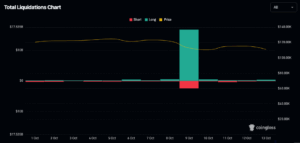Crash in a Flash!
As I’ve written numerous times, the greatest market shocks come from the unexpected, a jolt from left field. Sometimes the shock goes against a commonly held belief or trend, and other times it’s something entirely new. In all cases, it catches the market by surprise, and the wrong way around.
The last major shock occurred on April 2nd, “Liberation Day,” when President Trump announced his broad-based package of tariffs. The market, which hasn’t considered his tariff threats all that seriously until then (or even him, for that matter), was caught wrong footed and went into a death spiral. The SPX fell almost 10% in three days, and the VIX peaked out at a little over 60. When the President walked back his policy (which became his SOP over the next few months, which led to the “TACO” trade), the market quickly recovered and went back to its normal, AI-dominated theme. Tariffs? What tariffs?
Last Friday, and towards the end of the trading day, tariffs came back with a vengeance as part of the on-again, off-again trade war going on with China. Last Thursday, China announced that it was increasing its export restrictions on rare earth metals, as well as certain equipment needed to manufacture EV batteries. In retaliation, the President announced on Friday morning 100% tariffs on Chinese imports, in addition to the 30% tariff already in place.
Whether both sides are serious, or just negotiating to gain the upper hand in future negotiations, is anyone’s guess. As is well-known by now, the President likes to play “real-estate politik,” – threaten Holy Armageddon to scare the other side (“I’m going to raise your rent 30%, and if you don’t agree, I’m going to evict you and your life will be over!”), and then compromise. The only problem with this scorched earth negotiating tactic is that every now and then you have to make good on your threat. Otherwise, no one will believe you.
Apparently, the market believed the President last Friday and immediately went into major risk-off mode. The market was already sensitive to the incessant chatter about over-extended valuations, bubbles, general uncertainty, and currency debasement, so the President’s remarks struck a nerve. Tech and crypto were the major victims; gold, silver and the VIX were the beneficiaries.
Unsurprisingly, TACO reasserted itself on Sunday when the President tweeted that all be “fine” with China. The Chinese also softened their tone, but not after reminding him to stop threatening them with tariffs. Over the weekend, and as of Monday morning, the markets returned to normal and put the potential trade war with China back into its box. Obviously, Trump and Xi are trying to remind each other how tough they are before their scheduled meeting during the Asia/Pacific Summit on October 27 – November 1 (their meeting can still be cancelled – which would be a genuine shock to the markets).
So was Friday anything more than a blip? Maybe not. Consider Friday’s price action a useful dress rehearsal for what could happen if the trade war heats up for real, or some other shock occurs (e.g., the Fed disappoints or delays further rate cuts, Taiwan, political events, Ukraine, etc., etc.).
Crypto’s meltdown last Friday was particularly ominous, with bitcoin falling more than 10% in just a few hours and taking less liquid tokens down even further (some said to have declined 80%). Variously called a panic, purge, flush, meltdown or flash crash, the decline set off a wave of liquidations throughout the crypto market way out of proportion to the news. According to one crypto data analysis platform, CoinGlass, long liquidations of all tokens amounted to $16.7 billion (normally, they are much less than $500 million; they were as high as $3.0 billion last September 21).

Source: CoinGlass
Naturally, rumors circulated on social media that a large “whale” on the decentralized exchange Hyperliquid had shorted the market 30 minutes before the President’s announcement, and then took profit after the decline, pocketing $192 million in the process. Although the story may indeed be true (it’s been picked up by the mainstream media), rapid and mysterious declines usually spark rumors of insider trading, so take them with a grain of salt.
What crypto traders should be questioning is not who did it, but how the flash crash, or whatever it was, could have happened in the first place. Is the market too vulnerable to manipulation by a small number of traders? Is it too decentralized to be supervised adequately? Or is crypto just a pure and highly leveraged spec play, which makes it more vulnerable than other assets to periods of super-high volatility that are impossible to see coming? Personally, I would vote for all three.